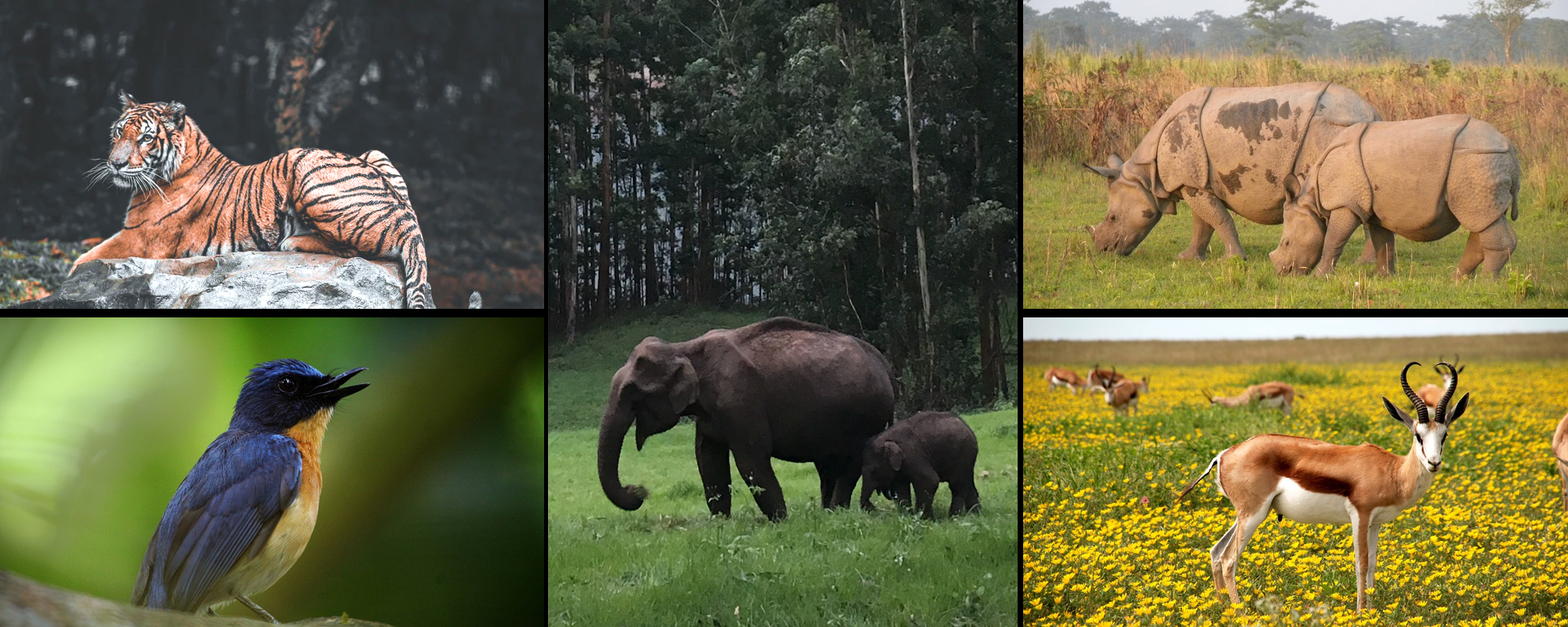
A uniquely protected area, Chinnar Wildlife Sanctuary is nestled amidst the eastern slope of the Southern Western Ghats in the state of Kerala, adjoining Tamil Nadu. The area has a diverse ecosystem that is rich in its ethnicity and cultural heritage. Enclosed by Eravikulam National Park from the south and by Indira Gandhi Wildlife Sanctuary from the north, Chinnar Wildlife Sanctuary is a traveler’s and nature lover’s delight with its exotic and impressive flora and fauna.
Established in 1984 with an area of 90 sq. kilometers, this sanctuary is an enchanting place with its floral, ecological, geomorphological, and cultural significance. A landscape made of thorny scrub forest, the sanctuary is ideal for trekking as it is situated in the rain shadow region of the Western Ghats and receives the very little amount of rainfall every year. Because of this variation of rainfall, Chinnar is endowed with wide-ranging flora and habitat types such as deciduous forests, dry thorn scrub, riparian forest, shoals, and grasslands along with sandalwood forest surrounding the sanctuary which enhances the attractiveness of the place.
Home to about 1000 species of flowering plants and a multitude of medicinal plants as well, the sanctuary welcomes pharmacists and nature lovers from time to time. Wildlife paramours and bird watchers will also have a delightful time in the sanctuary with over 225 recorded species of birds and some of the rare and endangered species of mammals. Chinar Wildlife Sanctuary is also renowned for its interesting eco-tourism activities organized by the forest department and the Eco-development Committees that comprises river trekking, trekking to the cultural site, nature trail to the watchtower, a trek to the Thoovanam falls, interpretation activities and medicinal garden, tree house at Chinnar, and trekking and camping at Vasyappara. A day at the Chinnar Wildlife Sanctuary will offer you the needed reprise from the hustle-bustle of life and will leave you with a sense of calmness.
The wildlife sanctuary can be seen in a diverse vegetation comprising wet grasslands, dry deciduous forest, thorny scrub forests, and high shoals. Other rare floral species that can be found here are acacia leucophloea, arabica, neelakurinji, Santalum album, Elaeocarpus recurvatus, etc.
Mammals: Little Cormorants, Sambar, Grizzled Giant Squirrel, Elephants, Hanuman Monkeys, Tuft Grey Langur, Bonnet Macaques, Gaur, Tigers, Spotted Deer, NilgiriTahr, Rusty Spotted Cat, etc.
Birds: Black Eagle, Serpent Eagle, Yellow-Throated Bulbul, Grey Heron, Little Egret, etc.
Reptiles: Spectacled Cobra, Darters, Kraits, etc.
Due to the ‘rain shadow effect’ at Chinnar, the climate remains hot and dry for most part of the year with temperature staying between 18 degrees Celsius to 25 degrees Celsius. The sanctuary receives very less rainfall averaging to 100mm during monsoons. The climatic conditions might get colder at higher altitudes.
The best time to visit Chinnar Wildlife Sanctuary is between December to April as the weather during this time is temperate and pleasant, making it easier for the visitors to explore around the jungle and taking in the best of the entire location.
Nearest Train Station: Kottayam Railway Station is the nearest station from the sanctuary at about 140km. On deboarding the train, you can hire a cab or take a local bus to reach the destination.
Nearest Airport: Madurai International Airport is the nearest airport from the sanctuary. Chinnar is 65km away from Munnar from where you can hire cabs to reach the destination.
Road Accessibility : Road journeys are considered the best to reach this sanctuary because of the stunning geographical location. It is well-connected to major parts of Kerala and can be easily reached by public or private vehicles.
Copyright 2012-2022 Indiamap Digital Pvt Ltd. All rights reserved. Privacy Policy | Terms of Use